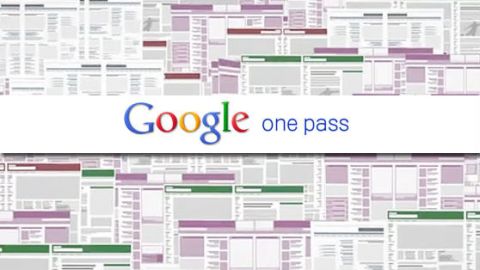Books Without Borders: The Digital Infinite Library

It almost goes without saying that the recent demise of bookseller Borders, which is in the process of liquidating more than 200 of its superstores around the nation, was inevitable. The rise of digital book culture has made many of the traditional trappings of a physical bookstore presence obsolete. Booksellers like Borders and Barnes & Noble are trying their best to innovate their way out of a difficult situation – dedicating more floorspace to digital book readers, emphasizing higher-margin multimedia items (educational toys) and hosting more live events to draw in neighborhood foot traffic – but the economics of the publishing industry have forever changed. In the same way that Blockbuster could no longer compete with Netflix and eventually filed for bankruptcy, bookstore chains like Borders can no longer compete with online retailers like Amazon.
And that’s where it gets interesting. Both Apple and Google have recently tossed their hats into the digital publishing realm, in the hopes of becoming the new middlewoman for publishers and readers. Apple, armed with the iPad and buoyed by the phenomenal success of the iTunes ecosystem, has put together a nifty little subscription model that exacts a 30% tariff on digital publishers for the “right” to sell their goods to Apple customers. (Yep, Apple views readers as belonging to them, and not to the publisher) Google, for its part, promises publishers a much more flexible arrangement, with the hopes of making all of the world’s book content available for Google searchers everywhere, regardless of which digital device they are using.
In other words, in exchange for continuing to make books available to us in digital format, we are implicitly assigning a company like Amazon, Google or Apple the privilege to act as the ultimate “gatekeeper” for our books. For lack of a better term (and as a way of dragging Jorge Luis Borges into the conversation), let’s call this the “digital infinite library” approach. Unlike neighborhood booksellers or the non-book bookstores, only companies like Amazon, Google or Apple can truly offer the illusion of infinite choice.
But does the Digital Infinite Library approach make sense? At the heart of this concept is a fairly unobtrusive notion: digital books are more or less perfect complements to physical books. (I suppose economists would call them substitute goods) This may hold up in the case of books like The Girl With the Dragon Tattoo (it’s a bestseller, you know what you’re getting ahead of time, you’ve probably already seen the movie, and it’s just plain cheaper to buy it digitally), but is this always the case?
Booksellers like Borders – even during their evolutionary decline – knew how to do a few things well — they organized regular events for authors (both known and unknown) to get the word out about their books, they created fun floor displays that encouraged serendipitous book browsing, and they turned a blind eye to patrons camped out on the floor reading books for hours at a time.
The success of the “digital infinite library” concept hinges on the ability of companies like Google, Apple or Amazon to re-create some of these attributes online, thereby encouraging the future development of digital book culture. Otherwise, they may meet the sad fate of the librarians in Borges’ Library of Babel: driven to despair by the overwhelming glut of books that are impossible to catalogue and have lost all meaning for them.





